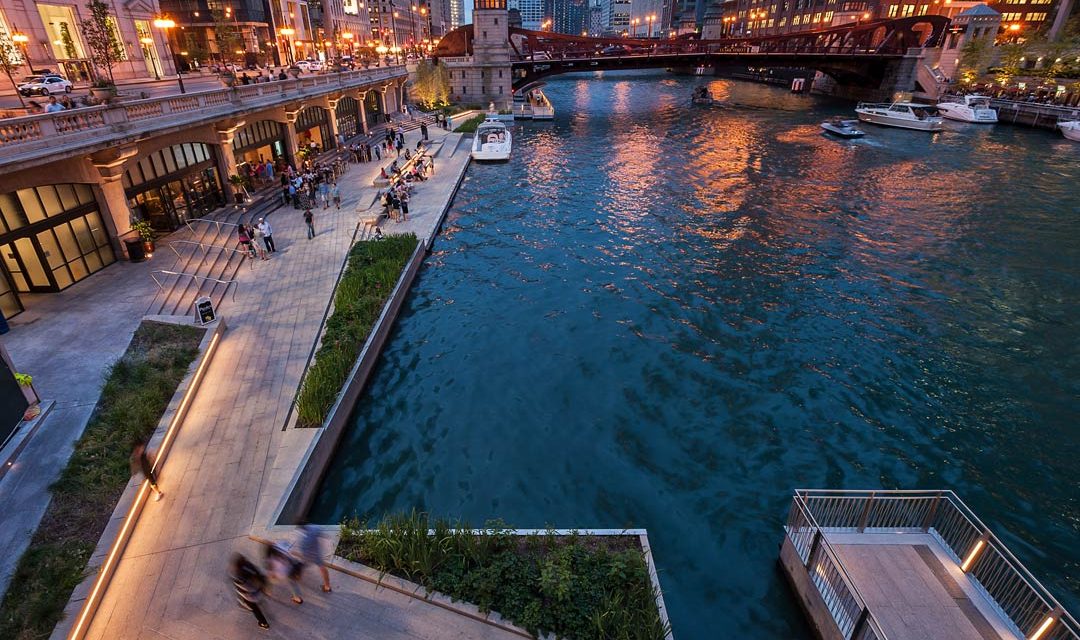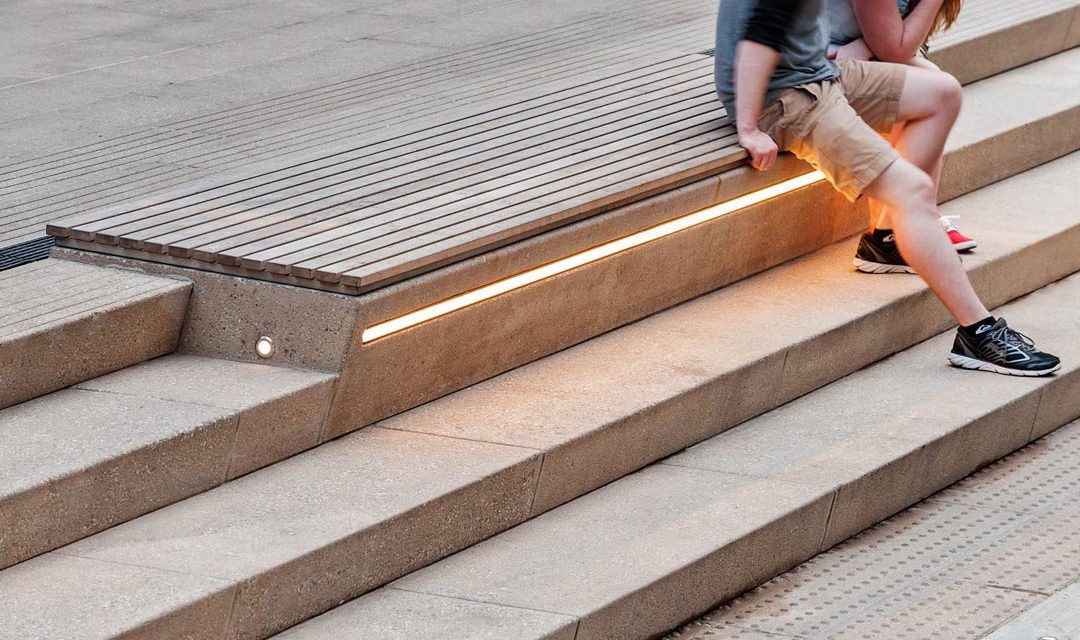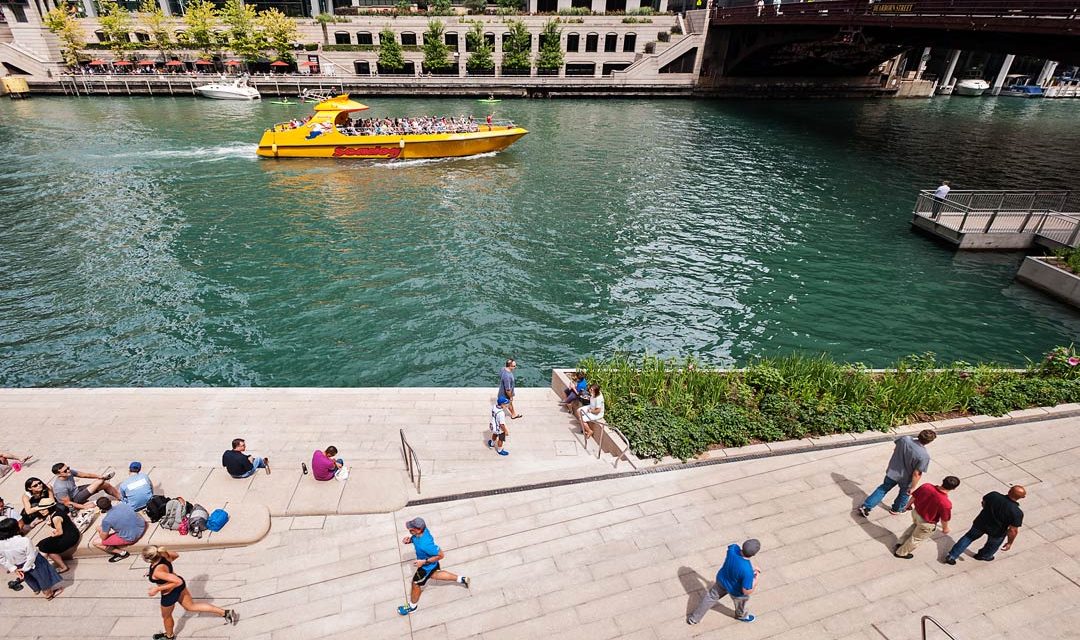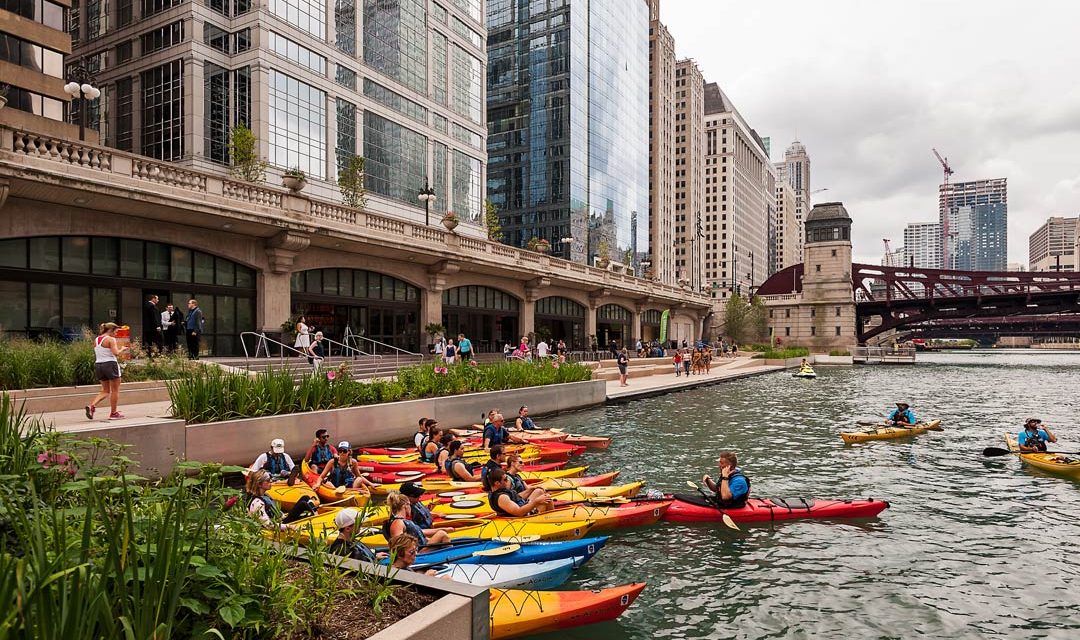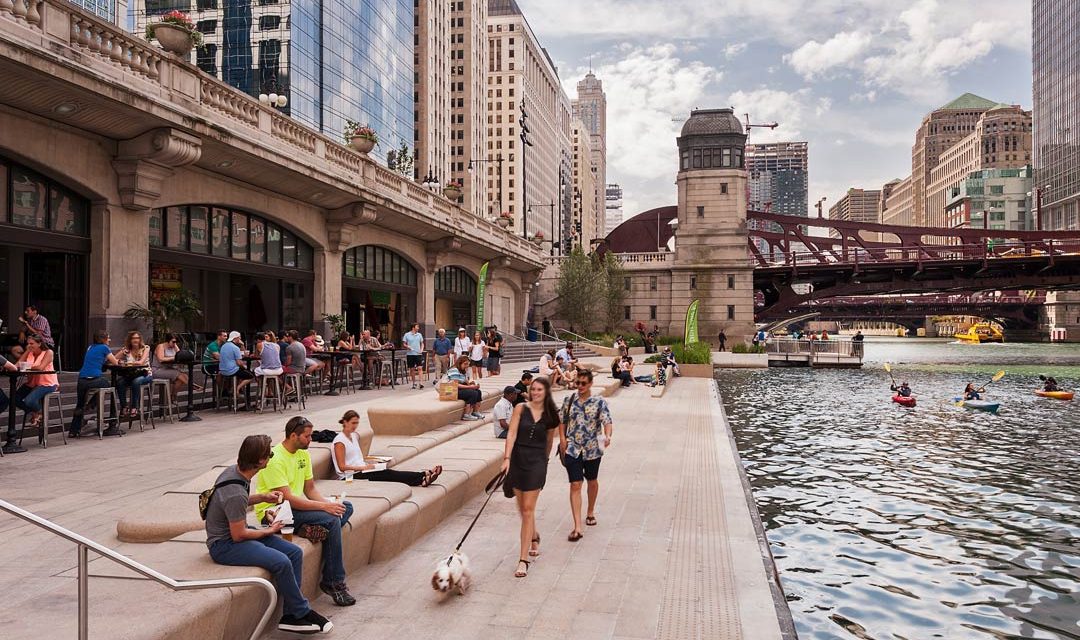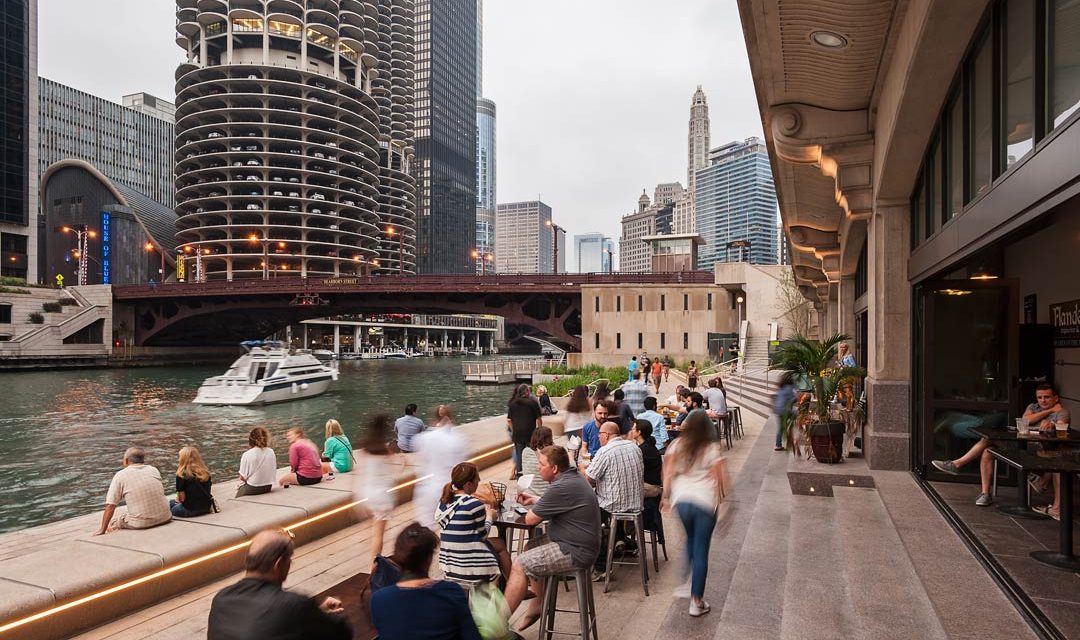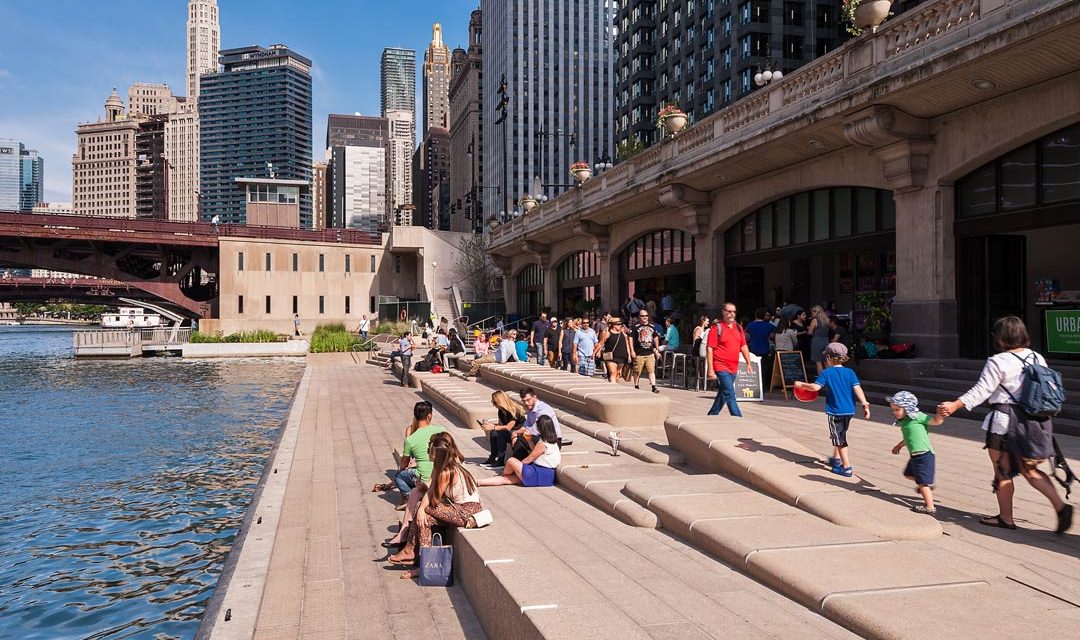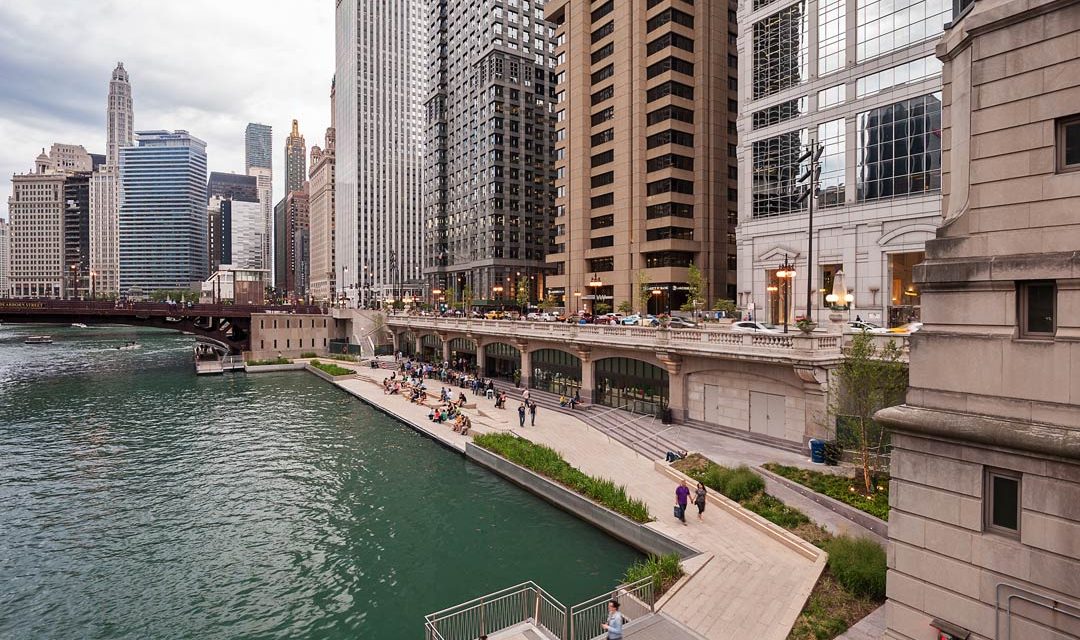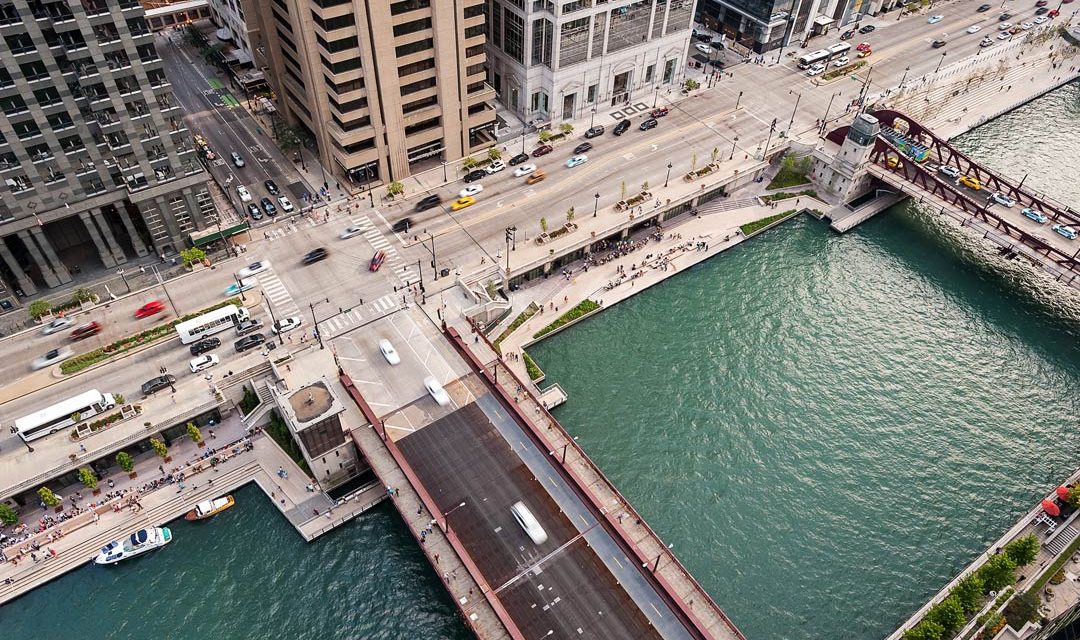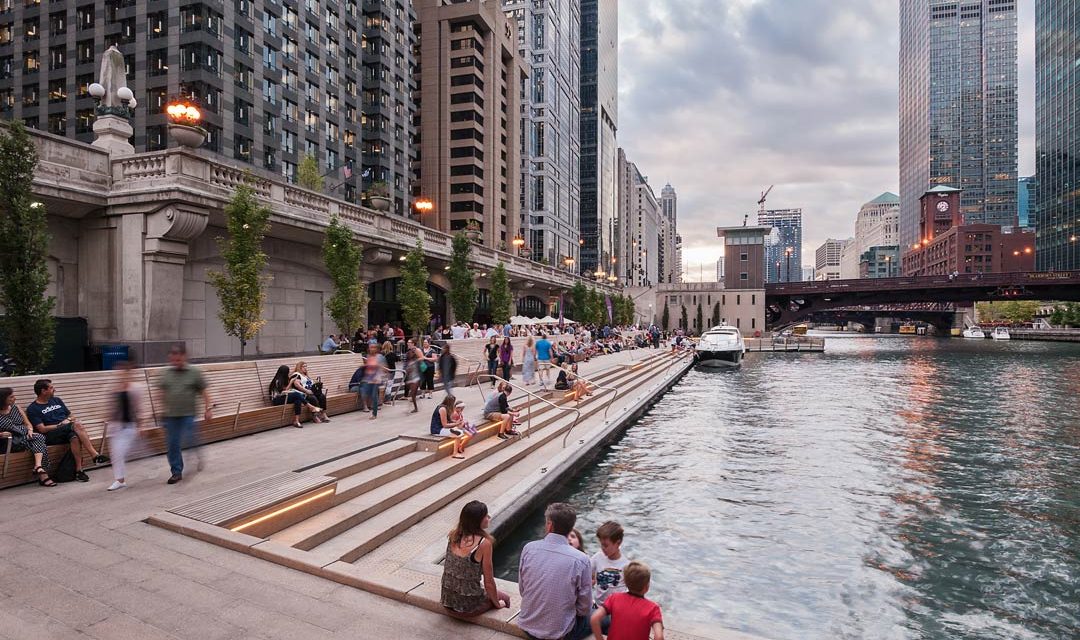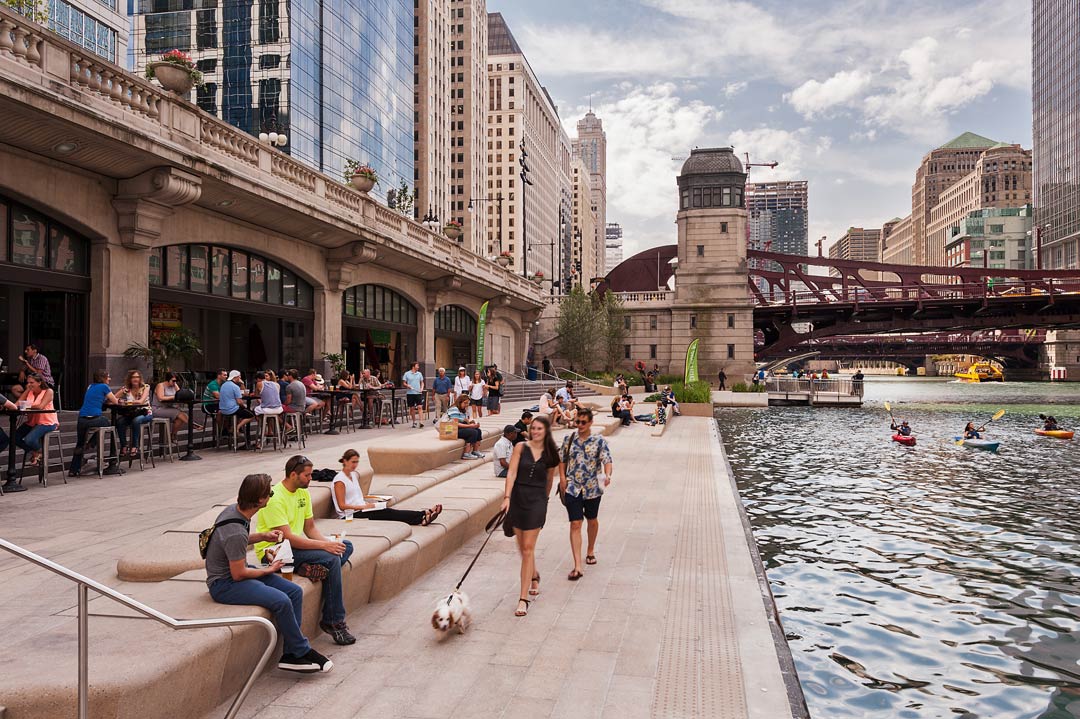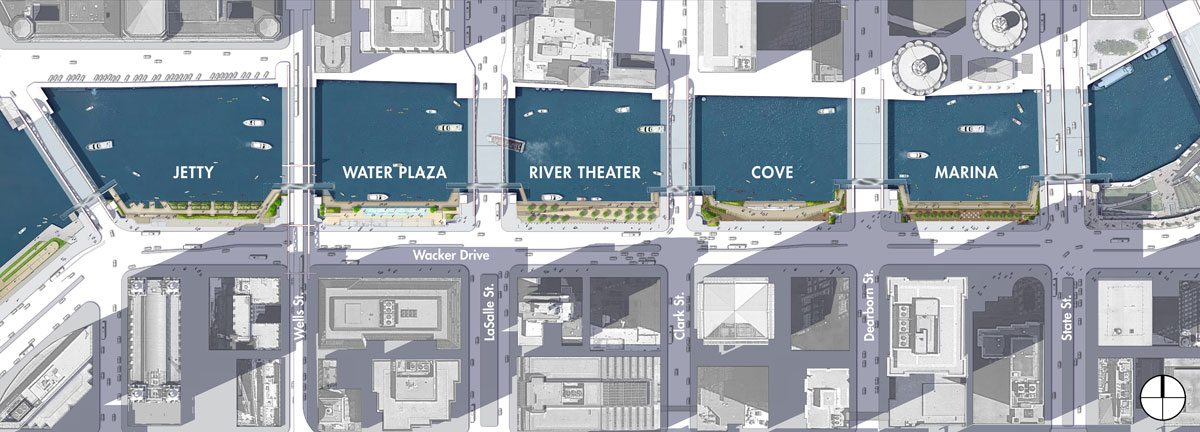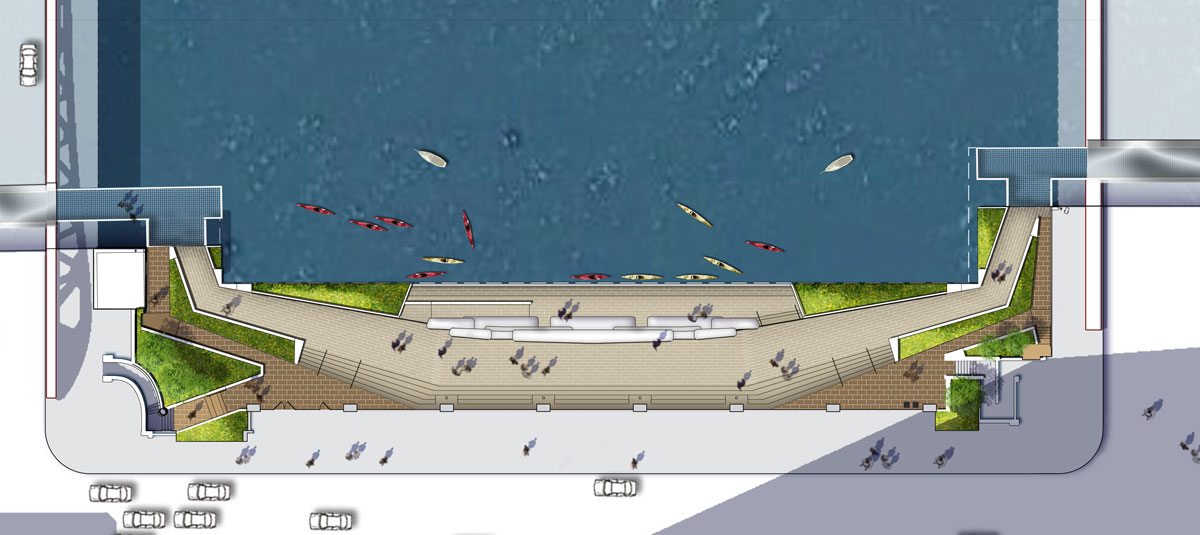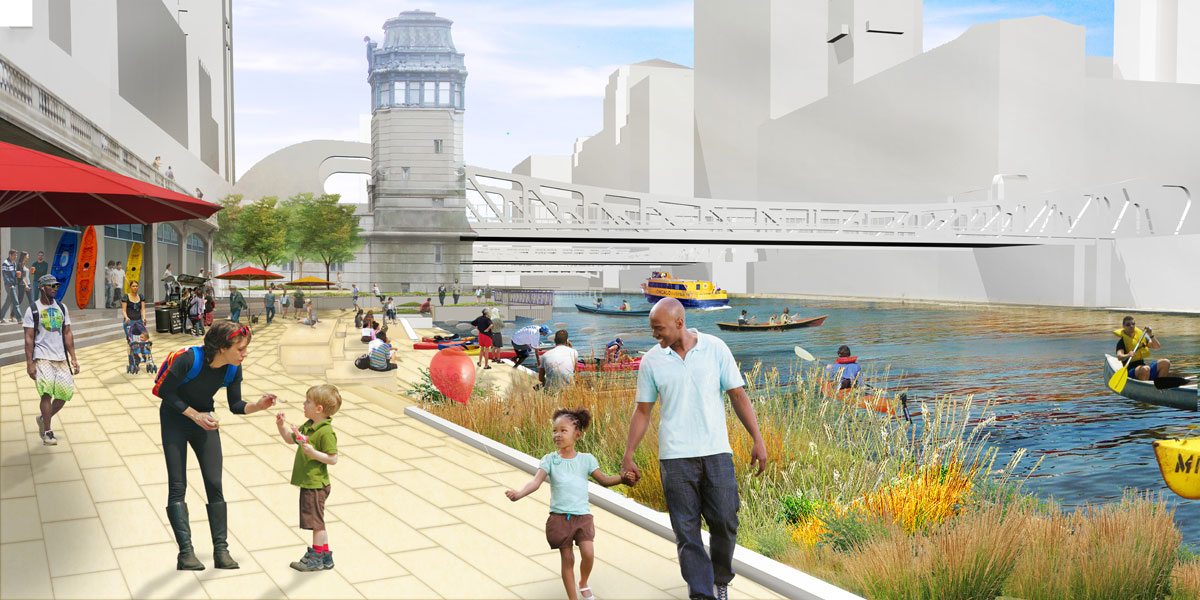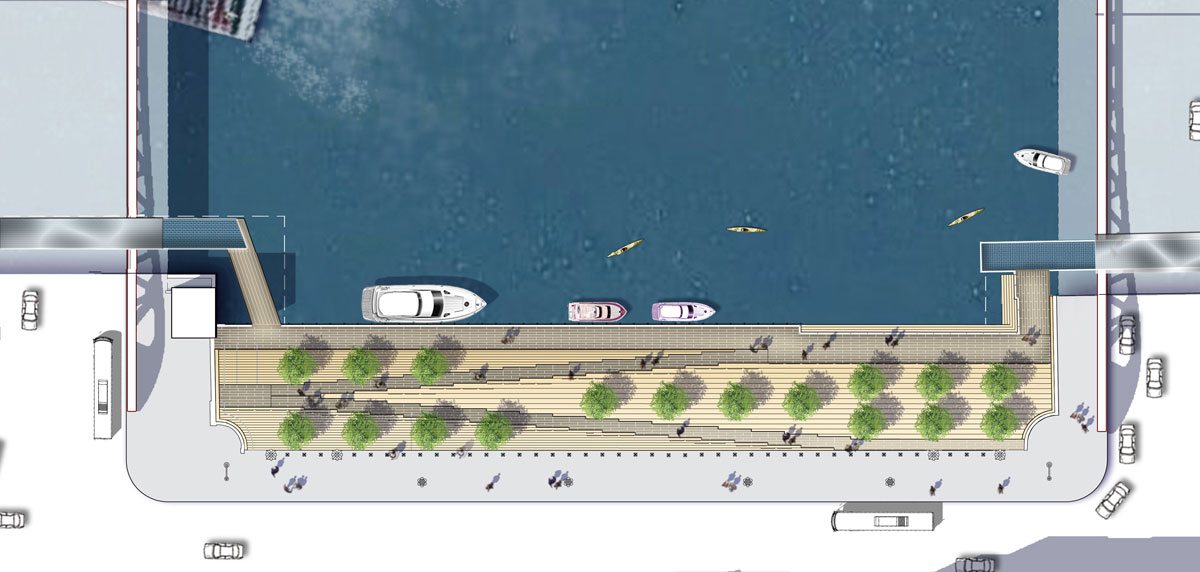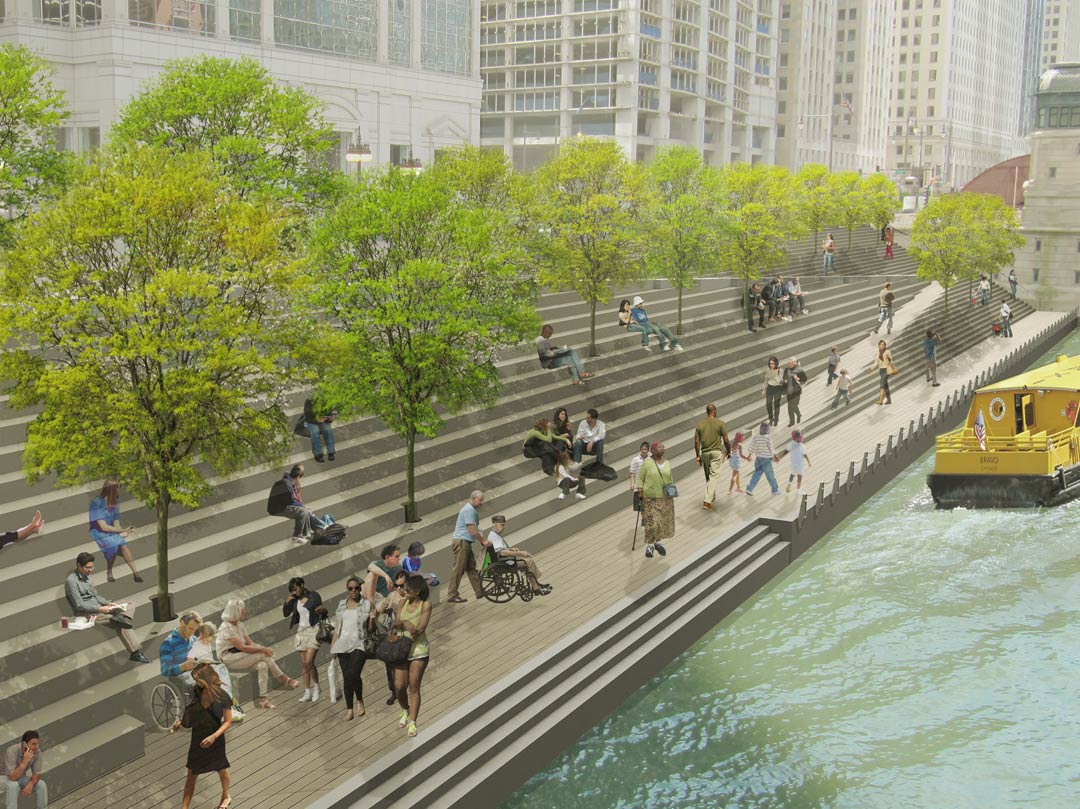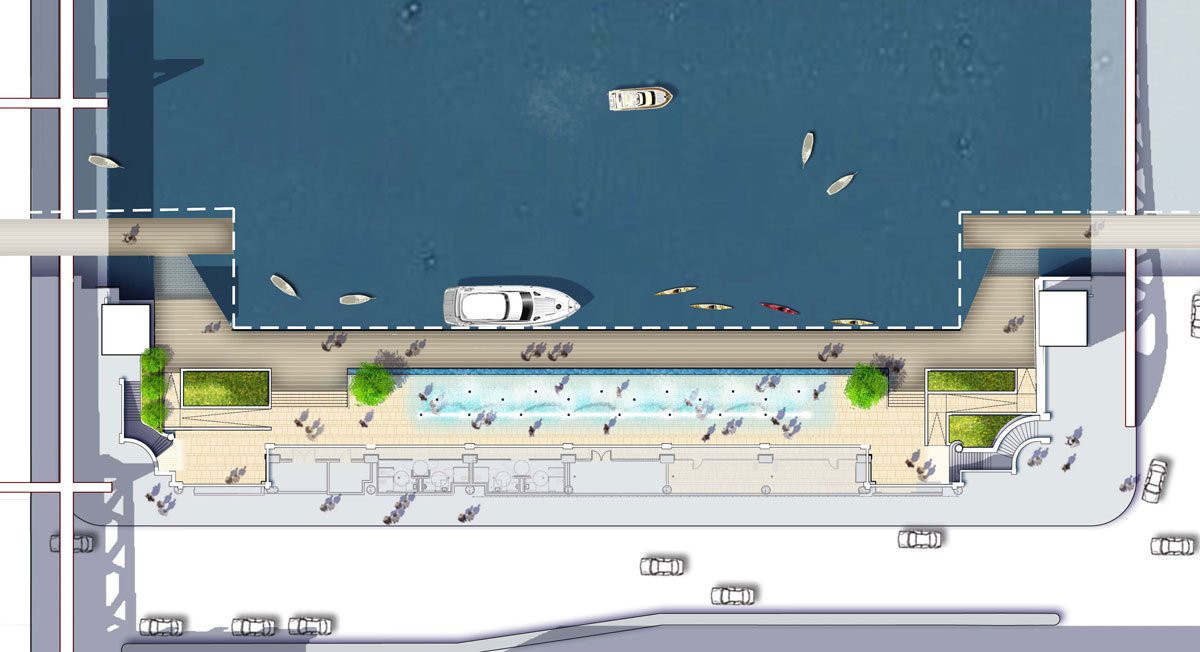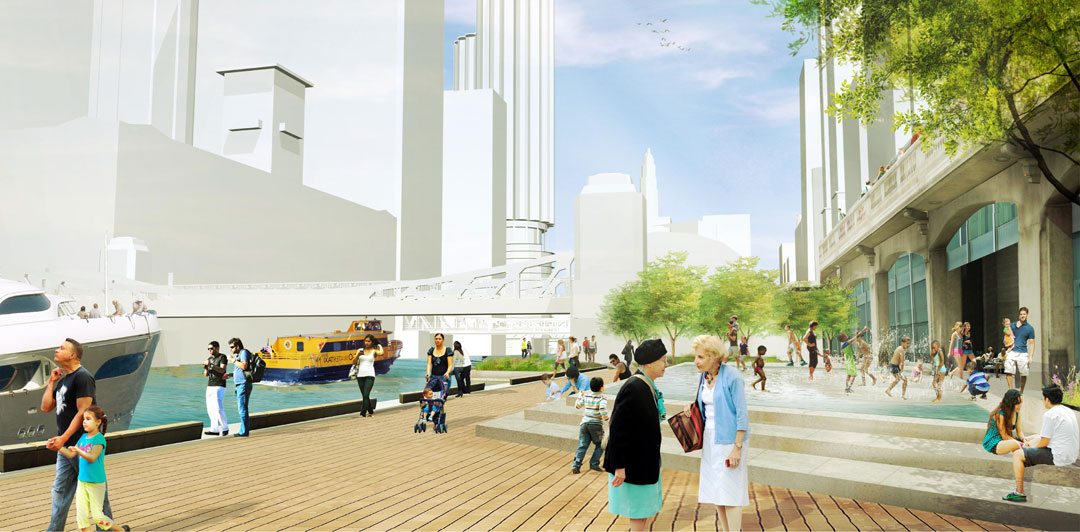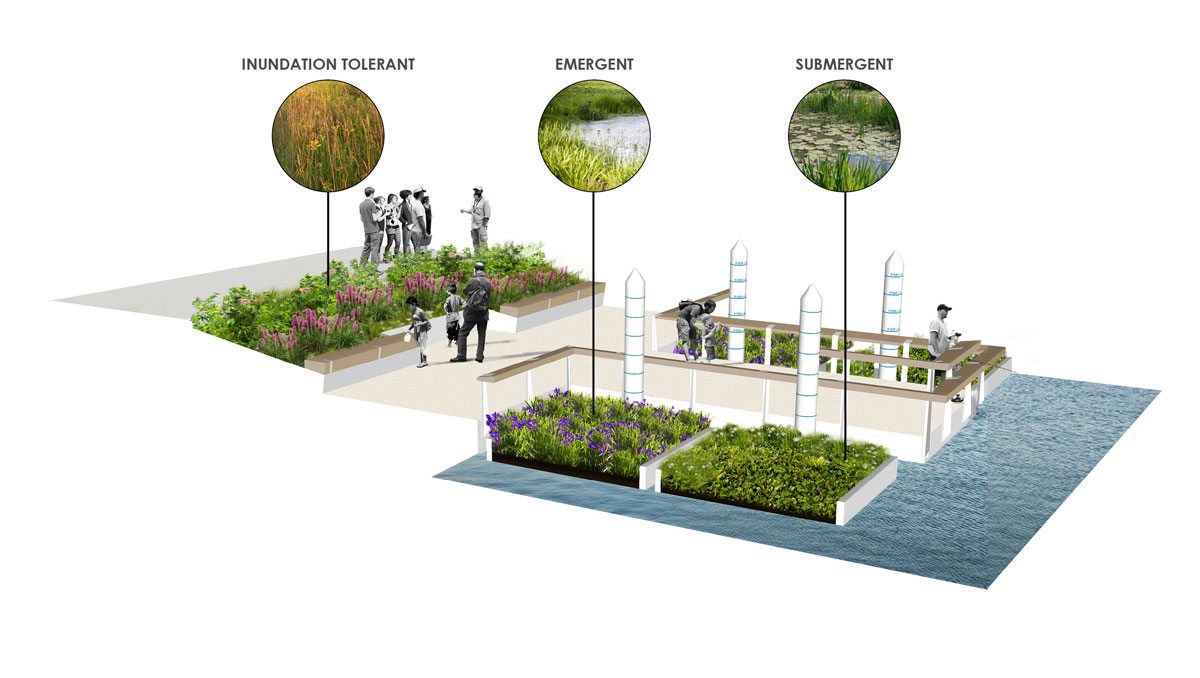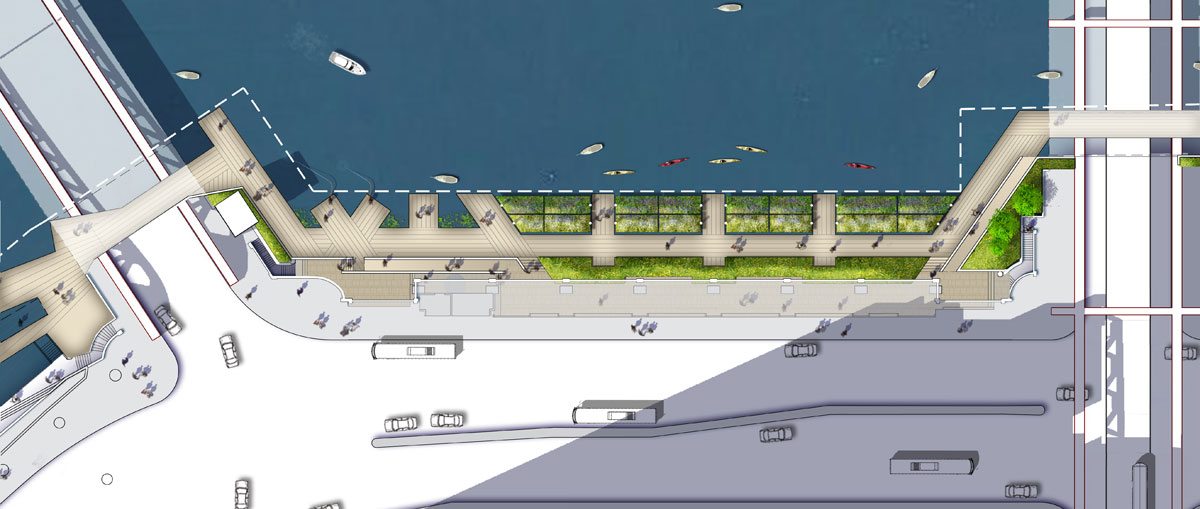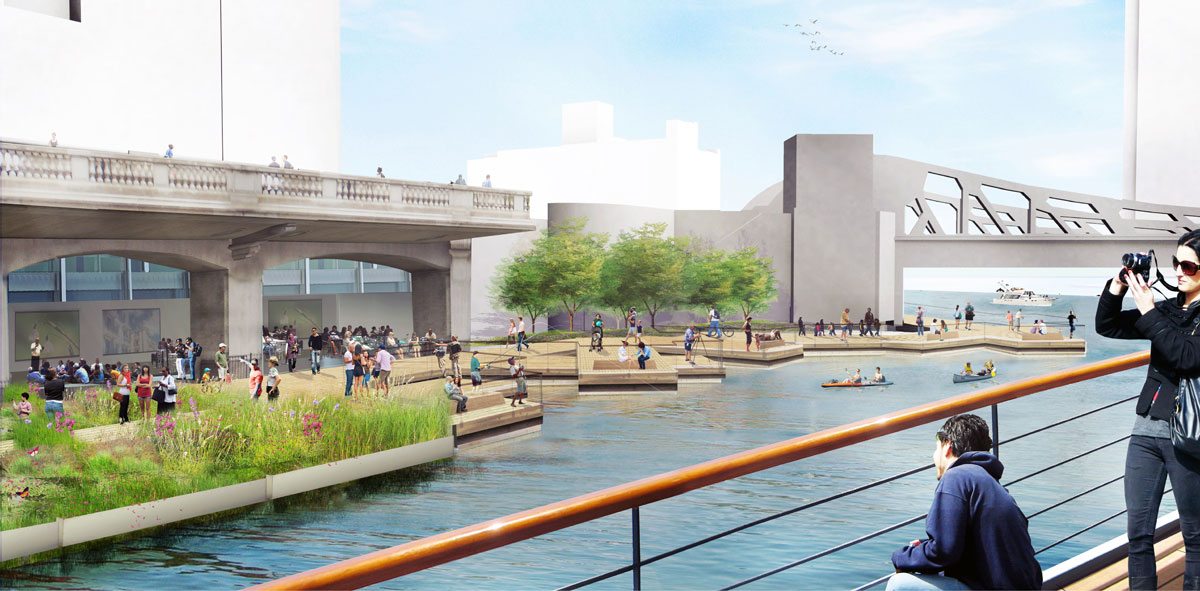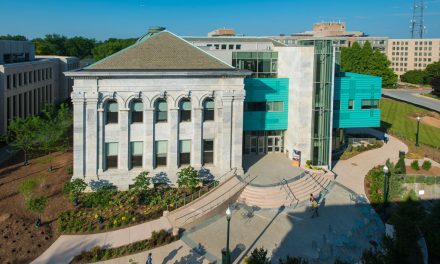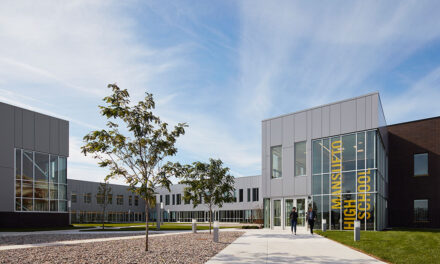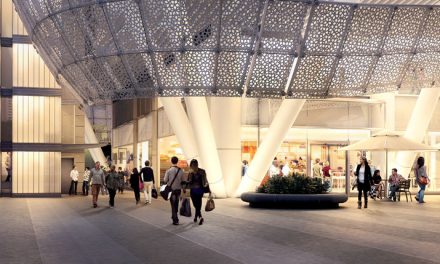The Main Branch of the Chicago River has a long and storied history that in many ways mirrors the development of Chicago itself. Once a meandering marshy stream, the river first became an engineered channel to support the industrial transformation of the city. Following the famed reversal of the river, in which the city reversed the flow of the Main Branch and South Branch to improve sanitation, architect and urban planner Daniel Burnham introduced a new civic vision of riverside promenades with the addition of the Wacker Drive viaduct. Over the last decade, the role of the river has been evolving with the Chicago Riverwalk project—an initiative to reclaim the Chicago River for the ecological, recreational and economic benefit of the city.
“The Chicago Riverwalk represents the best of how landscape architects can help cities reclaim their waterfronts – improving ecological health, promoting connectivity, embracing recreational use and providing economic benefit,” says Gina Ford, Sasaki principal and lead designer on the project.
The goal of embracing the river as a recreational amenity seemed impossible years ago given the river’s high levels of pollution. But today that vision is becoming a reality. Recent improvements in river water quality and the increased intensity of public recreational use signal growing life along the river, demanding new connections to the water’s edge. Accordingly, the Chicago Department of Transportation and Ross Barney Architects led Phase One of the Riverwalk, an initial segment that includes Veteran’s Memorial Plaza and the Bridgehouse Museum Plaza.
In 2012, the team of Sasaki, Ross Barney Architects, Alfred Benesch Engineers, and Jacobs/Ryan Associates, supported by technical consultants, was tasked with completing the vision for Phases Two and Three: six blocks between State Street and Lake Street. Building off the previous studies of the river, the team’s plans provide a pedestrian connection along the river between the lake and the river’s confluence.
“This latest phase of the Riverwalk builds on Daniel Burnham’s century-old vision of the river as a civic space, while addressing 21st century concerns about increasing recreation use, connectivity, economic prosperity and ecological health,” adds Ford.
The task at hand was technically challenging. The design team, for instance, needed to work within a tight permit-mandated 25-foot-wide build-out area to expand the pedestrian program spaces and negotiate a series of under-bridge connections between blocks. Further, the design had to account for the river’s annual flood dynamics of nearly seven vertical feet.
Turning these challenges into opportunities, the team imagined new ways of thinking about this linear park. Rather than a path composed of 90-degree turns, the team reconceived of the path as a more independent system—one that, through changes in its shape and form, would drive a series of new programmatic connections to the river.
With new connections that enrich and diversify life along the river, each block takes on the form and program of a different river-based typology. These spaces include:
The Marina Plaza: Restaurants and outdoor seating provide views of vibrant life on the water, including passing barges, patrols, water taxis, and sightseeing boats.
The Cove: Kayak rentals and docking for human-powered crafts provide physical connections to the water through recreation.
The River Theater: A sculptural staircase linking Upper Wacker and the Riverwalk offers pedestrian connectivity to the water’s edge and seating, while trees provide greenery and shade.
The Water Plaza: A water feature offers an opportunity for children and families to engage with water at the river’s edge.
The Jetty: A series of piers and floating wetland gardens offers an interactive learning environment about the ecology of the river, including opportunities for fishing and identifying native plants.
The Riverbank: An accessible walkway and new marine edge creates continuous access to Lake Street and sets the scene for future development in this critical space at the confluence. It provides an accessible route from lower to upper Wacker and Lake Street. It features a public lawn and the city is continuing to explore possibilities for how the room can be developed.
As a new connected path system, the Chicago Riverwalk design provides both continuity and variety for a park visitor. The distinct programs and forms of each typological space allow for diverse experiences on the river ranging from dining opportunities to expansive public event programming to new amenities for human-powered craft. At the same time, design materials, details, and repeated forms provide visual cohesion along the entire length of the project. Paving, for instance, mirrors the contrasts of the existing context: A refined cut stone follows the elegant Beaux-Arts Wacker viaduct and bridgehouse architecture, while a more rugged precast plank flanks the lower elevations and underside of the exposed steel bridges. New integrated lighting provides safety and visual stimulation to attract visitors during the night-time hours.
“This project was a significant design team effort with many years of dedicated leadership from the Chicago Department of Transportation and a strong vision from the Mayor to make the river Chicago’s next recreational frontier,” says Ford. “We are proud to see how the city has embraced the project as its own so fully and quickly.”
The first three blocks, from State Street to LaSalle Street, were completed and opened to the public in May, 2015. The construction of the next three blocks began in summer 2015 and was completed in October 2016.
All photos in this article: © Christian Philips.
All renderings and graphics in this article: Courtesy of Sasaki
About Sasaki
At Sasaki (www.sasaki.com), we believe in the transformative power of place. Places transcend physical spaces, becoming the context and the content of our experience of life. For over sixty years, Sasaki has brought together the best of architecture, interior design, landscape architecture, planning, urban design, civil engineering, graphic design, place branding, and data science to shape the places in which we live. Out of our Boston and Shanghai offices we are defining the contours of place and redefining what’s possible along the way. Today we are a diverse practice of 270 professionals who share a singular passion for creating spaces and places around the world that prove human potential.
About Ross Barney Architects
Ross Barney Architects (www.r-barc.com) is a Chicago-based architecture and urban design studio. Established by Carol Ross Barney, the studio occupies a unique place within the panorama of contemporary practice that is characterized by a reputation for work in the public realm. From community buildings to campus buildings for premier academic and research institutions, to groundbreaking transit stations that connect vibrant neighborhoods, Ross Barney Architects has produced distinctive structures that have become community icons. The studio’s ideas and projects have been recognized, published, and exhibited around the world, receiving more than 60 major awards.

